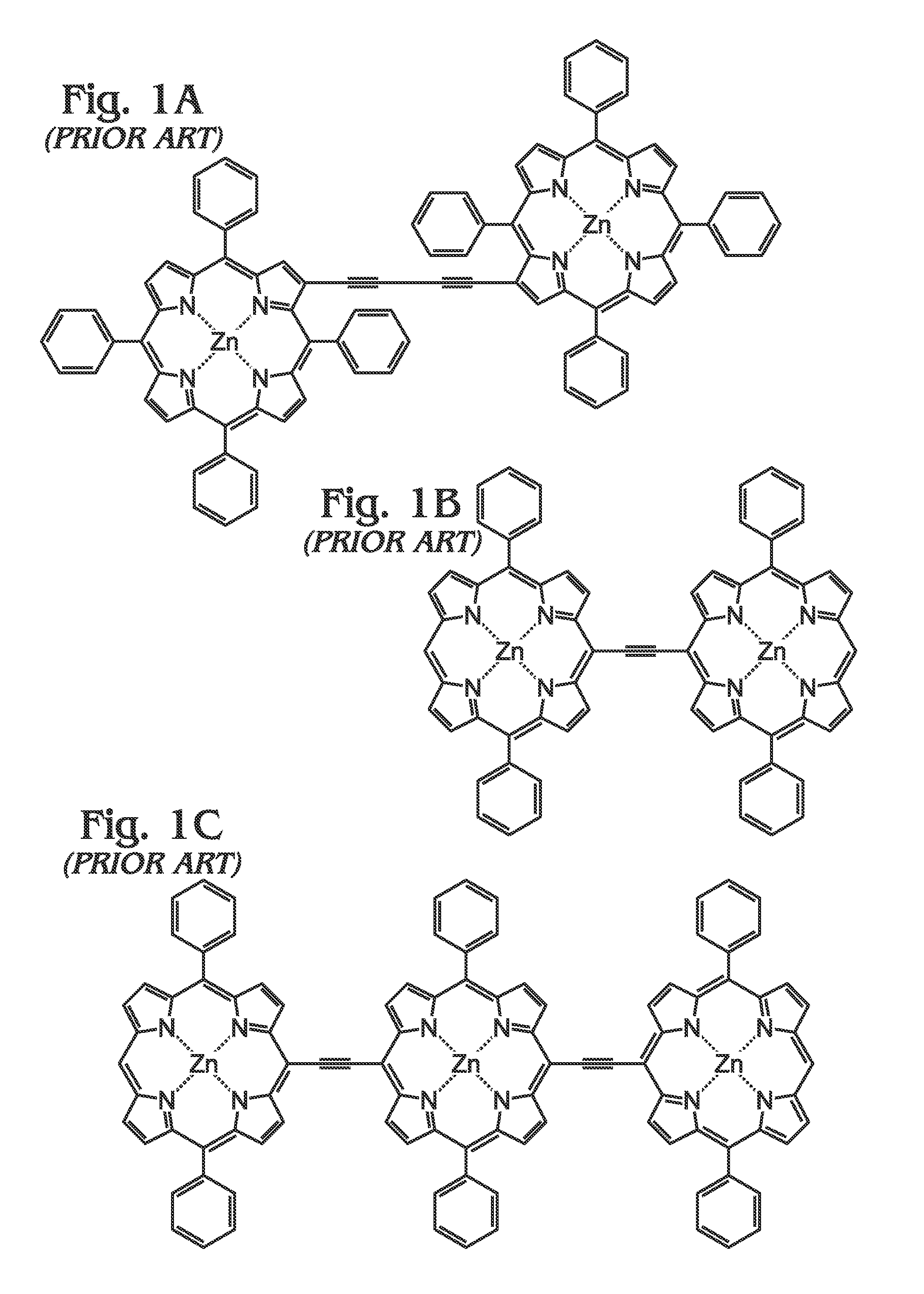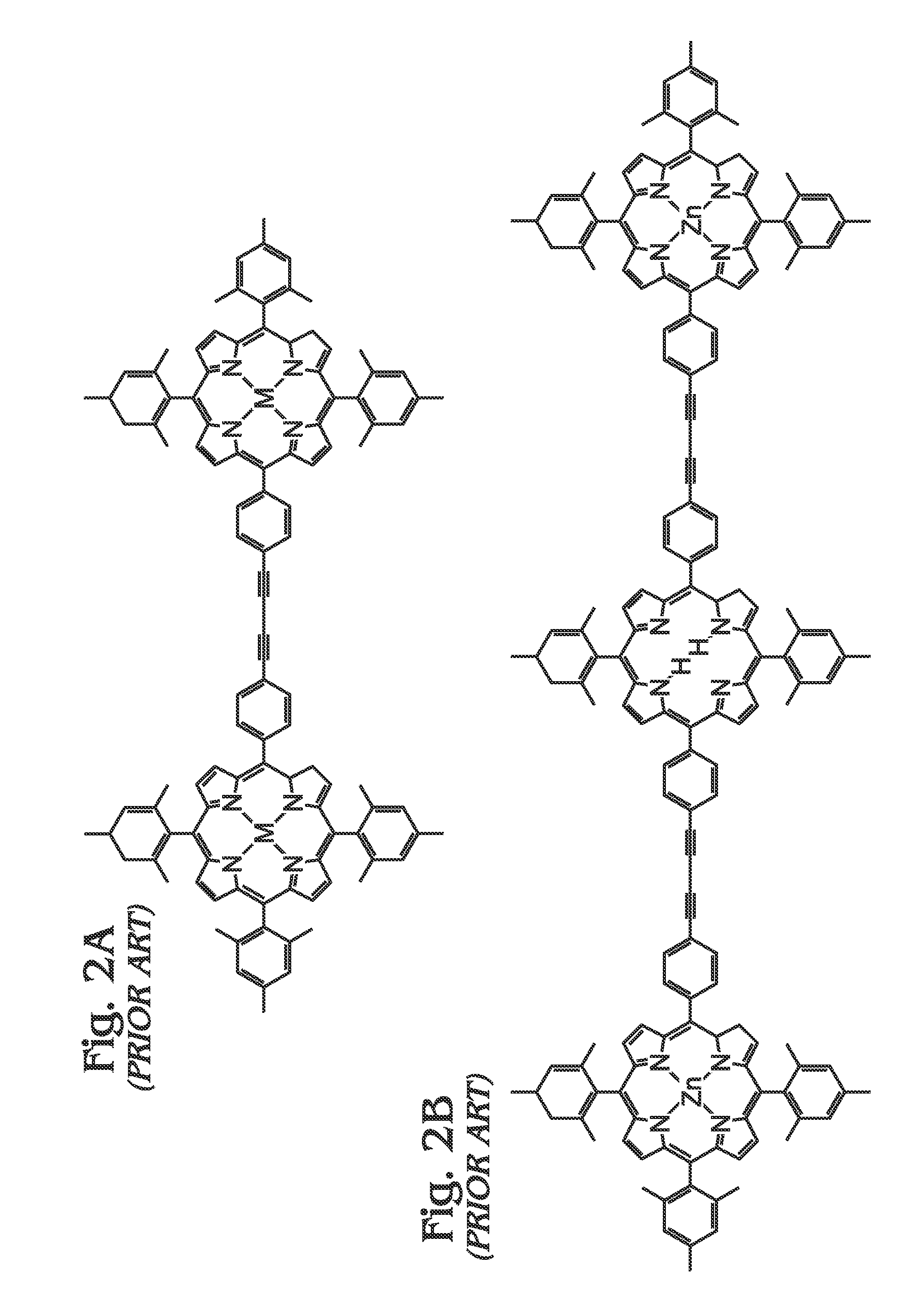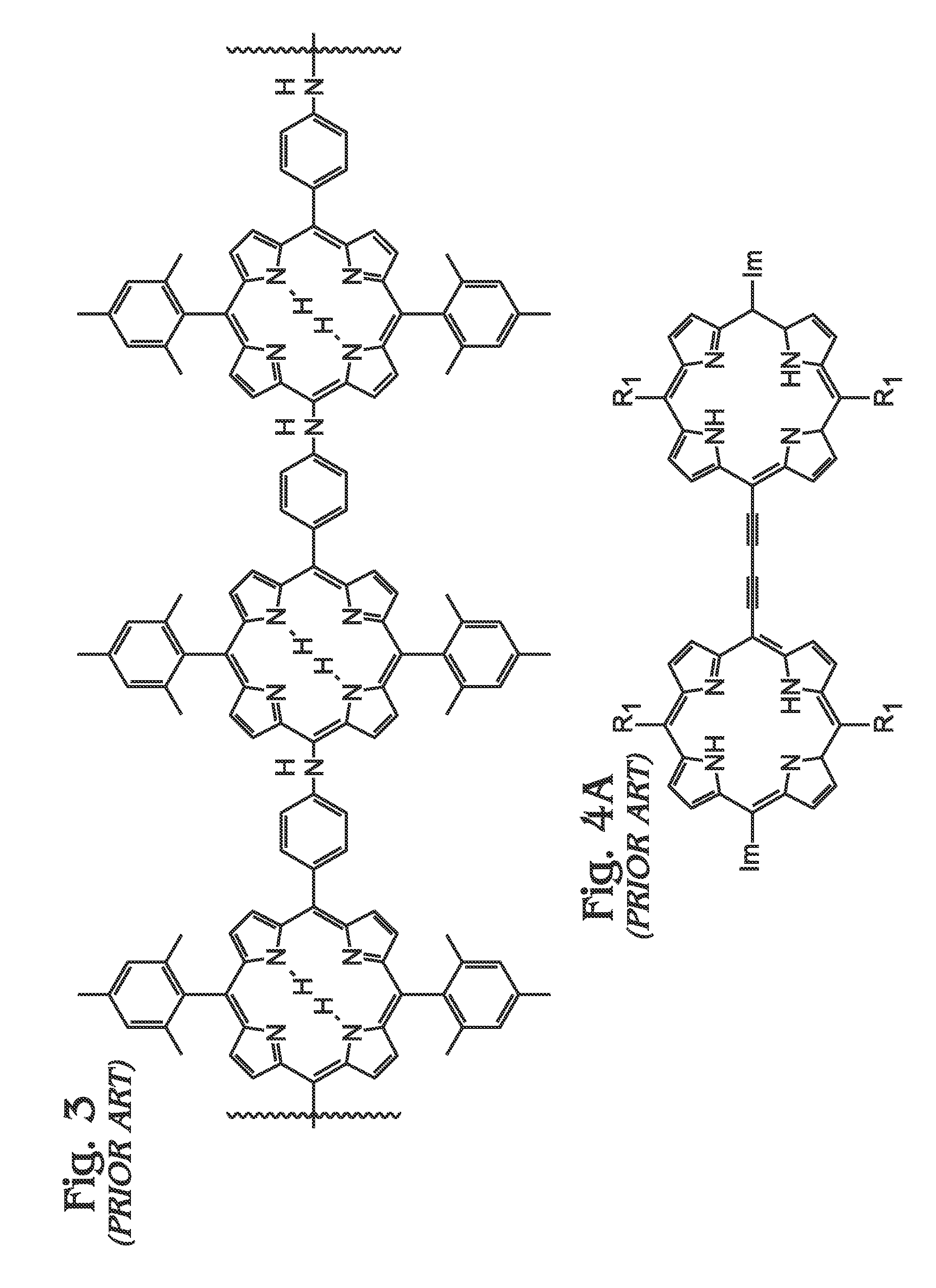Facile Synthesis of Metalloporphyrin Polymers
a technology of metalloporphyrin and polymer, which is applied in the field of metalloporphyrin polymer materials, can solve the problems of limited use of symmetrical tetraphenylporphyrins, limited reaction yields using this strategy, and limited reaction yields. achieve the effect of enhancing optical absorption characteristics and optical absorption properties
- Summary
- Abstract
- Description
- Claims
- Application Information
AI Technical Summary
Benefits of technology
Problems solved by technology
Method used
Image
Examples
Embodiment Construction
[0062]FIGS. 5A and 5B are diagrams of a metal (M) meso-tetraphenylporphyrin polymer (M-poly-meso-TPP). As shown in FIG. 5A, the M-poly-meso-TPP 500 comprises a plurality of M-tetra-C≡C-TPP (porphyrin) monomers 502 with meso-phenyl groups 504. Butadiyne (—C≡C—C≡C—) linking moieties 506 connect the meso-phenyl groups 504 of adjacent M-tetra-C≡C-TPP monomers 502. In one aspect, a bisamine-containing material coordinates with an M moiety of adjacent M-poly-meso-TPP polymer chains. As used herein, “bisamine coordination with the M moiety of adjacent polymer chains” refers to the coordination of a bisamine with the M group of two porphyrin monomer units. Due to axial coordination and the fact that the polymer exhibits a rigid conformation, by default these two monomers exist in different polymer chains, see FIG. 5B. As used herein, “ligand” is defined as an amine group containing species that coordinates with an M group of a M-containing porphyrin. As mentioned above in the Background Sec...
PUM
| Property | Measurement | Unit |
|---|---|---|
| wavelength | aaaaa | aaaaa |
| CO2 Adsorption Capacity | aaaaa | aaaaa |
| time | aaaaa | aaaaa |
Abstract
Description
Claims
Application Information
 Login to View More
Login to View More - R&D
- Intellectual Property
- Life Sciences
- Materials
- Tech Scout
- Unparalleled Data Quality
- Higher Quality Content
- 60% Fewer Hallucinations
Browse by: Latest US Patents, China's latest patents, Technical Efficacy Thesaurus, Application Domain, Technology Topic, Popular Technical Reports.
© 2025 PatSnap. All rights reserved.Legal|Privacy policy|Modern Slavery Act Transparency Statement|Sitemap|About US| Contact US: help@patsnap.com



